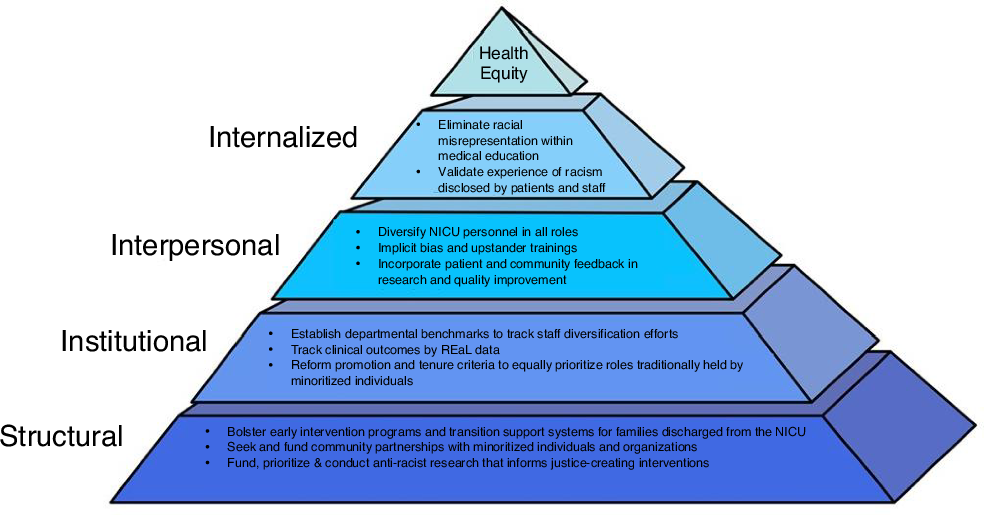How to Improve the U.S. Health Data Infrastructure – Penn LDI

Report on the State of U.S. Health Data Infrastructure and Alignment with Sustainable Development Goals
The United States’ health data infrastructure, critical for achieving Sustainable Development Goal 3 (Good Health and Well-being) and SDG 10 (Reduced Inequalities), is currently in a state of decline. The National Center for Health Statistics (NCHS), the primary entity for linking health surveys, censuses, and medical records, faces significant challenges that impede progress toward these global goals. This report outlines the system’s current weaknesses and proposes recommendations based on international models to rebuild the infrastructure in alignment with the SDGs.
Current Challenges to SDG Achievement
The deterioration of the U.S. health data system is a direct result of funding cuts, incomplete data collection, and a decline in public trust. These factors compromise the nation’s ability to monitor health outcomes and address disparities, which are central tenets of the 2030 Agenda for Sustainable Development.
Institutional Weaknesses and Data Gaps
Recent administrative actions have severely weakened the health data infrastructure, creating significant obstacles to achieving the SDGs.
- Funding and Personnel Reductions: The slashing of funds and personnel for key data collection initiatives undermines the capacity of institutions, directly conflicting with SDG 16 (Peace, Justice and Strong Institutions), which calls for effective, accountable, and transparent institutions.
- Omission of Sociodemographic Data: The mandated removal of key indicators such as gender identity and sexual orientation from federally funded data sources makes it impossible to track health disparities affecting marginalized groups. This directly hinders progress on SDG 10 (Reduced Inequalities) and SDG 5 (Gender Equality).
- Erosion of Public Trust: Actions such as proposing data sharing in violation of HIPAA and the Department of Government Efficiency’s (DOGE) questionable handling of personal information have eroded public trust, which is essential for the participatory governance envisioned in SDG 16.
Recommendations for Rebuilding Health Data Infrastructure Aligned with SDGs
Drawing lessons from European countries with robust, government-linked health databases, the U.S. can implement strategies to rebuild its system. These recommendations are framed to directly support the achievement of multiple Sustainable Development Goals.
-
Enhance Data Collection to Monitor SDG 10 (Reduced Inequalities)
To effectively address health inequalities, data linkage systems must collect comprehensive sociodemographic indicators, including income, race, ethnicity, gender identity, sexual orientation, and disability status. Incomplete data prevents researchers and policymakers from identifying and addressing the disparities that SDG 10 aims to eliminate.
-
Link Administrative and Survey Data to Uphold Privacy and Inclusivity
Following Sweden’s model, the U.S. should establish secure mechanisms for linking administrative and survey data. This approach allows individuals to share sensitive information in anonymous survey contexts, ensuring privacy while providing the detailed data needed to assess and address health inequalities, thereby supporting both SDG 3 and SDG 10.
-
Update Data Privacy Laws to Strengthen SDG 16 (Strong Institutions)
The U.S. must modernize its data privacy legislation, similar to Europe’s general data protection regulations. Updated laws are necessary to enable secure data linkage across government agencies while providing robust protection against misuse, thereby building the accountable and transparent institutions required by SDG 16.
-
Build Public Trust Through Consultation and Participation
To foster trust and ensure public buy-in, policymakers should integrate robust public consultation into the development of data linkage systems, a successful strategy used in the UK. This aligns with SDG 16’s emphasis on responsive, inclusive, and participatory decision-making. While individuals should have the option to opt out, public engagement can increase confidence and participation.
-
Provide Phased Open Access to Data to Foster SDG 17 (Partnerships for the Goals)
While immediate open access may be challenging, a long-term goal should be to make linked data available to a wide range of users, provided they can ensure data safeguarding. Restricting access to a small group, as seen in France, leads to underutilization. Broader access fosters the multi-stakeholder partnerships (SDG 17) needed to innovate and achieve health-related goals.
-
Ensure Equitable Data Access for All Stakeholders
To advance SDG 10, barriers to accessing linked health data must be lowered for researchers at smaller institutions, community organizations, and under-resourced government agencies. Models from the U.K. and France, which provide no-cost access to de-identified data and low-cost training, should be adopted. This democratizes data access and ensures that research is not limited to topics supported by major funding initiatives, allowing for a more equitable approach to public health.
Analysis of the Article in Relation to Sustainable Development Goals
1. Which SDGs are addressed or connected to the issues highlighted in the article?
- SDG 3: Good Health and Well-being: The article’s central theme is the degradation of the U.S. health data infrastructure, which is fundamental for monitoring public health, understanding health outcomes, and ensuring healthy lives for all citizens. The text states the system is “vital for showing how income, race, and community affect our health.”
- SDG 10: Reduced Inequalities: The article directly addresses this goal by focusing on the system’s inability to track and analyze health inequalities. It highlights the removal of “sociodemographic indicators like gender identity” and the need to collect data on “social or economic status, race, ethnicity, gender identity, sexual orientation, or disability status” to address health disparities.
- SDG 16: Peace, Justice and Strong Institutions: The article critiques the weakening of a key public institution, the National Center for Health Statistics (NCHS), due to “funding cuts, missing information, and growing public distrust.” It calls for strengthening institutions through better laws (“Update Data Privacy Laws”), public consultation (“Consult with the Public to Build Trust”), and ensuring public access to information.
- SDG 17: Partnerships for the Goals: The article advocates for learning from international partners (“U.S. can learn from foreign countries about data linkage”) and enhancing domestic partnerships by making data accessible to a wider range of stakeholders, including “researchers at smaller institutions, community organizations, or under-resourced local and state government.” This also relates to the goal’s emphasis on data and monitoring.
2. What specific targets under those SDGs can be identified based on the article’s content?
-
Under SDG 3 (Good Health and Well-being):
- Target 3.d: Strengthen the capacity of all countries, in particular developing countries, for early warning, risk reduction and management of national and global health risks. The article argues that the U.S. health data infrastructure is “falling apart just when we need it most,” indicating a weakened capacity to manage national health challenges.
-
Under SDG 10 (Reduced Inequalities):
- Target 10.2: By 2030, empower and promote the social, economic and political inclusion of all, irrespective of age, sex, disability, race, ethnicity, origin, religion or economic or other status. The article’s primary recommendation to “Collect All Key Sociodemographic Indicators” is a direct prerequisite for monitoring and achieving this target in the context of health.
- Target 10.3: Ensure equal opportunity and reduce inequalities of outcome. The article explains that without comprehensive data, it is impossible for “researchers and policymakers who want to learn about health inequalities” to assess and address unequal health outcomes.
-
Under SDG 16 (Peace, Justice and Strong Institutions):
- Target 16.6: Develop effective, accountable and transparent institutions at all levels. The article describes the NCHS as “weakened by funding cuts” and subject to political demands, undermining its effectiveness and accountability. The call to rebuild the system is a call to restore institutional integrity.
- Target 16.10: Ensure public access to information and protect fundamental freedoms, in accordance with national legislation and international agreements. The recommendations to “Provide Open Access to Linked Data” and “Update Data Privacy Laws” directly align with this target’s dual focus on access and protection.
-
Under SDG 17 (Partnerships for the Goals):
- Target 17.18: By 2020, enhance capacity-building support… to increase significantly the availability of high-quality, timely and reliable data disaggregated by income, race, ethnicity, migratory status, disability, geographic location and other characteristics relevant in national contexts. Although the target date has passed, the article’s core argument is about the critical need for exactly this type of disaggregated data in the U.S.
3. Are there any indicators mentioned or implied in the article that can be used to measure progress towards the identified targets?
The article does not mention official SDG indicators, but it implies several metrics that could be used to measure progress:
- Availability of disaggregated data: A key implied indicator is the extent to which the national health data system collects and provides data disaggregated by the sociodemographic factors listed in the article: “social or economic status, race, ethnicity, gender identity, sexual orientation, or disability status.” This would measure progress towards Targets 10.2 and 17.18.
- Public trust in government institutions: The article explicitly mentions “growing public distrust” and “low” trust in government as a major challenge. Measuring public trust through surveys would be an indicator for Target 16.6, as trust is a component of institutional effectiveness.
- Accessibility of data for research: Progress could be measured by tracking the number and diversity of users accessing the health data. The article notes that currently, “researchers at smaller institutions, community organizations, or under-resourced local and state government and health care settings faced substantial costs and barriers.” Reducing these barriers and increasing access would be a positive indicator for Target 16.10.
- Strength of data privacy legislation: The existence and enforcement of updated, comprehensive data privacy laws, as suggested by the recommendation to “follow Europe’s lead and implement general data protection legislation,” would serve as an indicator for protecting fundamental freedoms under Target 16.10.
4. Create a table with three columns titled ‘SDGs, Targets and Indicators” to present the findings from analyzing the article.
| SDGs | Targets | Indicators (Implied from the Article) |
|---|---|---|
| SDG 3: Good Health and Well-being | 3.d: Strengthen capacity for management of national health risks. | Functionality and funding levels of the national health data infrastructure (NCHS). |
| SDG 10: Reduced Inequalities | 10.2: Promote the social inclusion of all. | Collection and availability of health data disaggregated by race, ethnicity, gender identity, sexual orientation, disability, and economic status. |
| 10.3: Ensure equal opportunity and reduce inequalities of outcome. | Use of disaggregated data by researchers and policymakers to identify and address health inequalities. | |
| SDG 16: Peace, Justice and Strong Institutions | 16.6: Develop effective, accountable and transparent institutions. | Level of public trust in government data handling; Rate of public opt-outs from data linkage systems. |
| 16.10: Ensure public access to information and protect fundamental freedoms. | Existence of modern data privacy legislation; Number and diversity of users (e.g., from smaller institutions, community organizations) accessing linked health data. | |
| SDG 17: Partnerships for the Goals | 17.18: Increase the availability of high-quality, timely and reliable disaggregated data. | Completeness of key sociodemographic indicators within the national health data system. |
Source: ldi.upenn.edu
What is Your Reaction?
 Like
0
Like
0
 Dislike
0
Dislike
0
 Love
0
Love
0
 Funny
0
Funny
0
 Angry
0
Angry
0
 Sad
0
Sad
0
 Wow
0
Wow
0
















































/environment-climate-change-and-health-(ech)/water-sanitation-hygiene-and-health-(wsh)/landfill-tuvalu-36092.tmb-1200v.jpg?sfvrsn=5c21fe40_1#)

.jpg.webp?itok=0ZsAnae9#)

























